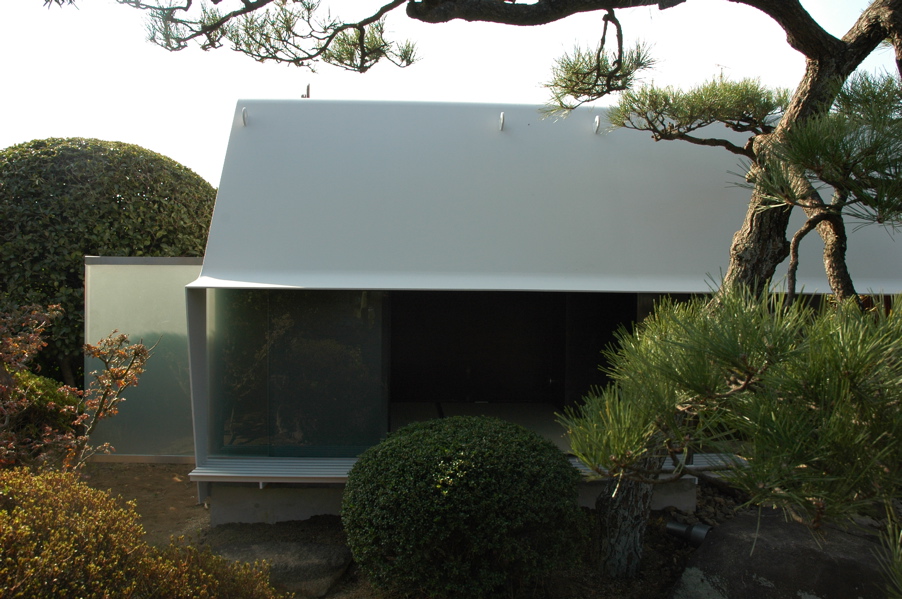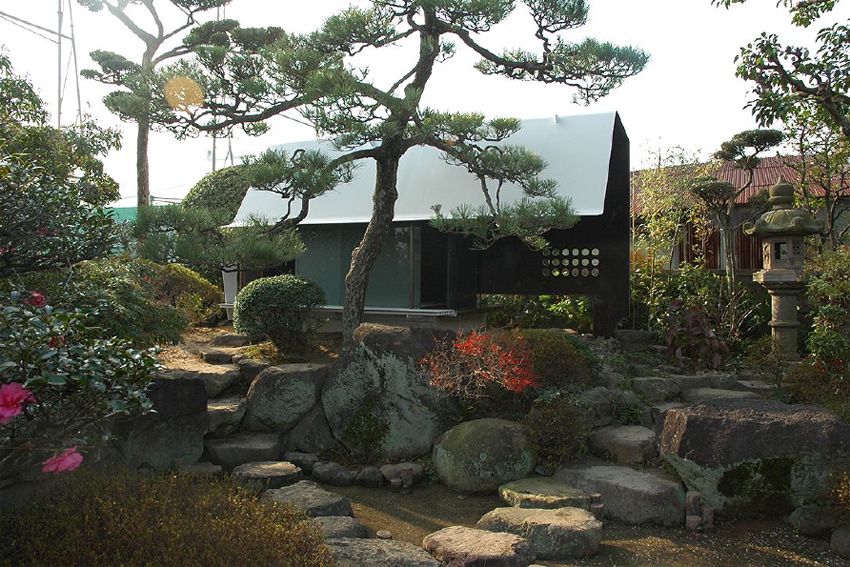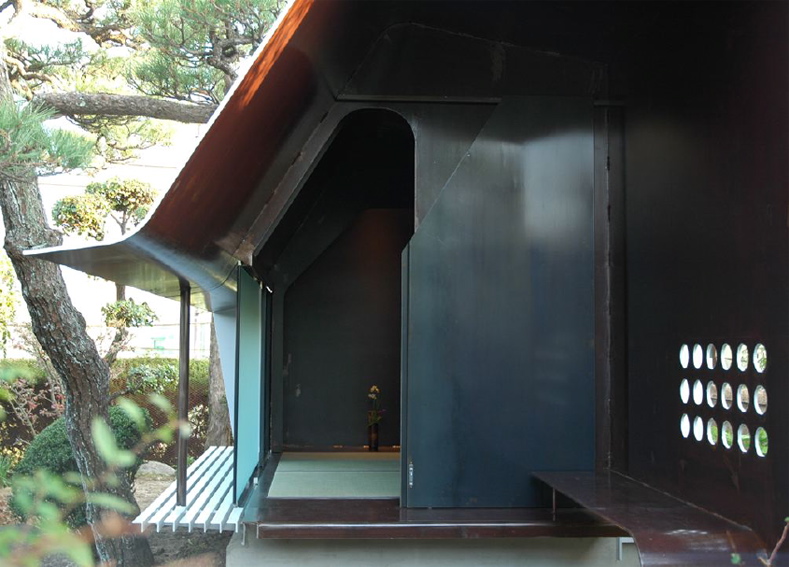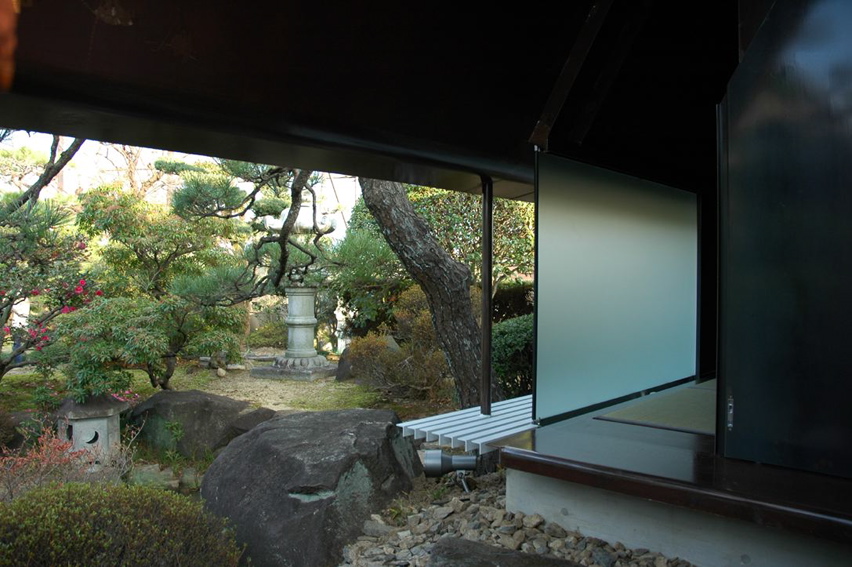



Steel Sheet Teahouse
2004.02-04.11The engawa (veranda) in this minka faces the remnants of a precious Japanese-style garden, which was maintained for many years as a hobby of the preceding generation. Inheriting the shape of this bequest, a contemporary monocoque tearoom was newly installed in the garden. So as not to hurt the existing delicate garden trees, the main body of the tearoom was made in a factory, then simply placed in its location in the garden. Overall, it is divided into a half-exterior meeting part and a stoic interior space comprising an alcove and two tatami mats, covered with a roof membrane of steel sheet. An extraordinary space, this tearoom is a contemporary meditation space, and at the seasons change it is a place in dialogue with nature. As well as being also to wander through the exciting garden, visually there emerges a spatial continuity that unifies inside and outside even more than the engawa, producing a lifestyle in intimate contact with nature.
The steel sheet that I used goes from an architectural building frame to an industrially processed product like a vehicle, and the sculptural usage avoids the impact of the strong expression of steel. The advantage of this material is its high degree of strength and the possibility of high-precision factory fabrication through using CAD; a standard quality may be maintained everywhere, the price-per-weight does not vary much, and it can cope with customization and prefabrication. The sizes for this tearoom were determined by the volume of heights and widths that are able to be transported by vehicle. It was all produced at the factory, and the 9mm-thick steel sheets were bent into curved surface at key points in order to make a unified pre-strengthened structure. Divided into two parts, it was then lowered as-it into the garden by crane. It was then reconnected, fittings were inserted, tatami mats were laid, and this was all completed over a short period of time. The inside and outside have been given a different expression. Traces of the fabrication process and welding have been left in the interior, and the outside is finished with industrial smooth painting like a vehicle, with a taste for simplicity and quiet.
- Location
- Osaka
- Photography
- Sugino Kei